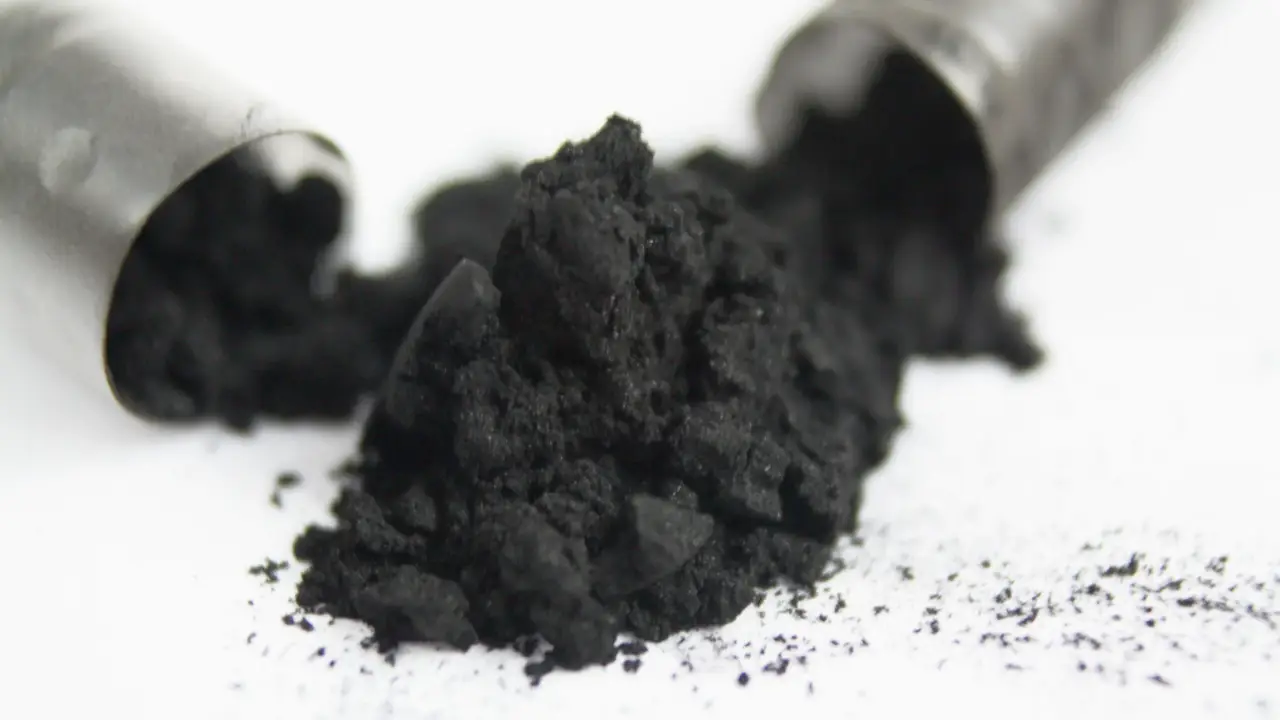Supplier of Carbon Black from Turkey and Dubai-UAE

Descriptions of Carbon Black
Carbon black is a fine black powder produced by the incomplete combustion or thermal decomposition of hydrocarbons such as heavy oils, tar, and coal tar. Composed primarily of elemental carbon (97–99%), it is widely used in industrial applications for its reinforcing, coloring, and conductive properties.
It plays a crucial role in rubber, tire, plastics, coatings, electronics, and automotive industries, improving product durability, flexibility, and performance.
Properties of Carbon Black
-
Appearance: Fine black powder
-
Composition: Elemental carbon 97–99%
-
Particle Size: 10–500 nanometers
-
Surface Area: High, enhancing material interactions
-
Structure: Aggregates of primary particles forming branched clusters
-
Density: 1.7–1.9 g/cm³ (20°C)
-
Bulk Density: Powder: 20–380 kg/m³, Pellets: 200–680 kg/m³
-
Solubility: Insoluble in water
-
pH Value: 5–10
-
Decomposition Temp: 300°C
-
Auto Ignition Temp: >140°C
Types and Grades of Carbon Black
Carbon black is classified based on production method, particle size, surface area, and structure, which determine its performance in various applications.
Types of Carbon Black
-
Furnace Black: Most common type; produced via partial combustion of hydrocarbons. Used in tires, rubber products, and reinforced plastics.
-
Channel Black: Produced by burning natural gas over channels; smaller particle sizes, high surface area. Ideal for specialty rubber and inks.
-
Thermal Black: Produced by thermal decomposition; larger particle size, lower surface area. Suitable for flexible hoses, gaskets, and soft rubber.
-
Acetylene Black: Derived from acetylene gas decomposition; high purity and excellent conductivity. Used in batteries, conductive plastics, and electronics.
Grades of Carbon Black
-
N220 (Furnace Grade): Medium structure, high surface area. Provides high tensile strength and wear resistance. Used in tire treads, conveyor belts, and mechanical rubber products.
-
N330 (HAF – High Abrasion Furnace): Medium structure and surface area. Offers a balance of abrasion resistance, flexibility, and tensile strength. Commonly used in tires, molded rubber, and automotive components.
-
N550 (Furnace Grade): Low surface area, high structure. Suitable for fast extrusion, tubes, hoses, and plastic cable duct compounds. Provides good dispersion and moderate abrasion resistance.
-
N772 (Semi-Reinforced Furnace Grade): Low surface area, low structure. Highly flexible with excellent dynamic properties. Used in gaskets, extruded products, belts, hoses, engine mounts, and tire linings.
Hard vs. Soft Carbon Blacks:
-
Hard CB: High wear resistance; used in tire treads and rigid rubber.
-
Soft CB: Flexible and resilient; ideal for tire carcasses and highly flexible rubber products.
Applications of Carbon Black
- Rubber Industry: Reinforces tires, belts, and hoses; provides deep black color. Used alongside Soda Ash Dense in some rubber formulations to enhance processing and durability.
- Pigments: High-strength black pigment for inks, paints, and plastics; offers UV protection.
- Electronics: Improves conductivity in polymers and battery electrodes.
- Plastics: UV stabilizer; enhances mechanical and aesthetic properties.
- Construction: Strengthens concrete, asphalt, and coatings for durability.
Production Methods
-
Furnace Process: Hydrocarbons are partially combusted at high temperature; carbon black is collected.
-
Thermal Decomposition: Hydrocarbons decomposed in the absence of oxygen to form carbon black.
-
Acetylene Process: Controlled decomposition of acetylene gas produces high-purity carbon black.
Packing and Container Loading
Carbon black is packed to prevent moisture absorption and maintain quality:
-
Small Orders: 25 kg and 50 kg PP bags
-
Bulk Orders: 1 MT jumbo bags (Big Bags)
Container Loading:
-
20 ft Container: ~16–17 MT of jumbo bags
-
40 ft Container: ~25 MT of jumbo bags

Environmental and Safety Considerations
-
Air Pollution: Production may release particulate pollutants; regulated for minimal environmental impact.
-
Health Risks: Dust can irritate the respiratory tract and skin.
TECHNICAL DATA SHEET OF CARBON BLACK
| TEST NAME | UNIT | ASTM METHOD | N-220 | N-234 | N-326 | N-330 | N-339 | N-347 | N-375 | N-550 | N-660 | N-772 |
|---|---|---|---|---|---|---|---|---|---|---|---|---|
| Lodine Number | mg/g | ASTM D1510 | 116-125 | 115-125 | 77-87 | 77-87 | 85-95 | 85-95 | 85-95 | 38-48 | 31-41 | 25-35 |
| DBP Absorption Number | ml/100g | ASTM D2414 | 109-119 | 120-130 | 67-77 | 97-107 | 115-125 | 119-129 | 109-119 | 116-126 | 85-95 | 60-70 |
| CDBP Absorption Number | ml/100g | ASTM D3493 | 93-103 | 97-107 | 63-73 | 83-93 | 94-104 | 94-104 | 91-101 | 80-90 | 69-79 | 54-64 |
| Heating Loss (max) | %w | ASTM D1509 | 0.75 | 0.75 | 0.75 | 0.75 | 0.75 | 0.75 | 0.75 | 0.75 | 0.75 | 0.75 |
| Pour Density | g/l | ASTM D1513 | 335-375 | 300-340 | 435-475 | 360-400 | 325-365 | 315-355 | 325-365 | 340-380 | 420-460 | 500-540 |
| Toluene Discoloration (min) | %T | ASTM D1618 | 90 | 90 | 90 | 90 | 90 | 90 | 90 | 85 | 85 | 85 |
| Sieve Residue NO.35 (max) | ppm | ASTM D1514 | 0 | 0 | 0 | 0 | 0 | 0 | 0 | 0 | 0 | 0 |
| Sieve Residue NO.325 (max) | ppm | ASTM D1514 | 200 | 200 | 200 | 200 | 200 | 200 | 200 | 200 | 200 | 200 |
| PH Value | ASTM D1512 | 7.5-9 | 7.5-9 | 7.5-9 | 7.5-9 | 7.5-9 | 7.5-9 | 7.5-9 | 7.5-9 | 7.5-9 | 7.5-9 | |
| Ash Content | %w | ASTM D1506 | 0.75 | 0.75 | 0.75 | 0.75 | 0.75 | 0.75 | 0.75 | 0.75 | 0.75 | 0.75 |
| FINES (Bag) (max) | %w | ASTM D1508 | 10 | 10 | 10 | 10 | 10 | 10 | 10 | 10 | 10 | 10 |
| FINES (Big Bag) (max) | %w | ASTM D1508 | 7 | 7 | 7 | 7 | 7 | 7 | 7 | 7 | 7 | 7 |
| Individual Pellet Hardness | CN | ASTM D03313 | 10-40 | 10-40 | 10-40 | 10-40 | 10-40 | 10-40 | 10-40 | 10-40 | 10-40 | 10-40 |
| Sulfur Content (max) | %w | ASTM D1619 | 1 | 1 | 1 | 1 | 1 | 1 | 1 | 1 | 1 | 1 |
| Nitrogen Surface Area | m²/g | ASTM D6556 | 109-126 | 114-124 | 73-83 | 73-83 | 86-96 | 80-90 | 88-98 | 35-45 | 30-40 | 27-37 |
| Tint Strength | %ITRB Value 16 | ASTM D3265 16 | 111-121 16 | 118-128 16 | 106-116 16 | 99-109 | 106-11616 | 100-110 16 | 109-119 16 | 58-68 | 53-67 | – |


